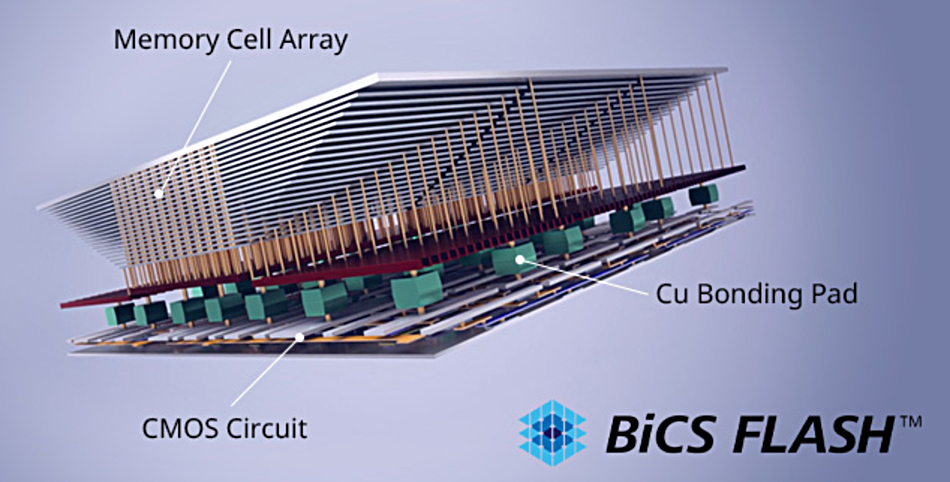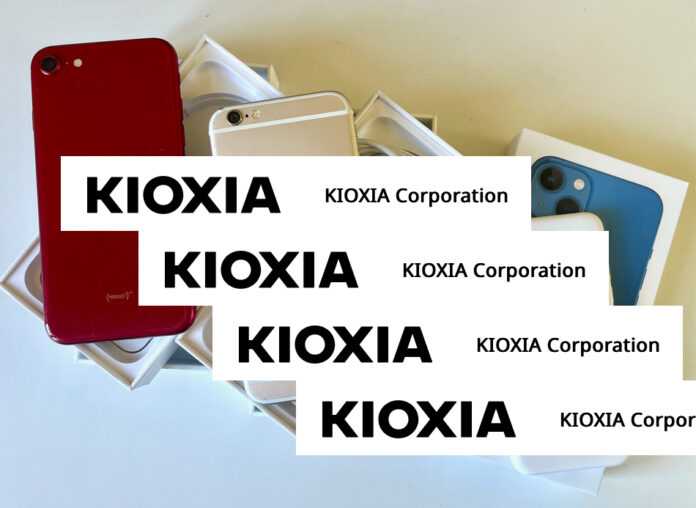Kioxia is sampling the latest UFS v4.1 embedded smartphone and tablet flash with faster downloads and smoother app performance for on-device AI.
UFS (Universal Flash Storage) refers to small flash memory cards, think large fingernails, for smartphones, tablets, digital cameras, and small gaming consoles. There is a purchasable JEDEC standard defining UFS characteristics and the purchasable v4.1 standard was published in January. The UFS 4.0 standard defined a 2-lane device with TLC NAND and an approximate 4.2 GBps maximum bandwidth provided by two lanes operating at 23.2 Gbps (2900 MBps) via MIPI M-PHY v5.0 and UniPro v2.0.
UFS v4.1 adds these tweaks:
- Host-Initiated Defragmentation: New mechanisms for optimizing read traffic through host-initiated data defragmentation facilitate more effective memory maintenance. This enables delayed garbage collection for uninterrupted fast performance during critical times.
- WriteBooster Buffer Resize and Partial Flush: Allows the host to request buffer resizing, data pinning, and more granular flushing to maximize system throughput.
- Permanent Bootable Logical Units: Logical units can now be configured as permanently bootable.
- RPMB Authentication: Secures vendor-specific command execution through Replay Protected Memory Block (RPMB) authentication.
- Enhanced Exception Types: Provides faster recovery, improved health notifications, and prompt error handling.
- Increased precision for enhanced memory logical Units: Prepares the way for Quad-Level Cell (QLC) NAND implementations (with increased capacities).
- Backward compatibility with UFS v4.0, 3.1, and 3.0.
Kioxia’s sample UFS v4.1 chips use its 218-layer TLC 3D NAND (BiCS8 generation) with its semiconductor logic layer directly bonded to the NAND array (CBA) to help improve density, electrical efficiency and performance.

It has 256 GB, 512 GB, and 1 TB capacity levels and is faster than Kioxia’s v4.0 product:
- Random writes: 512 GB/1 TB approx. +30 percent
- Random reads: 512 GB approx. +45 percent, 1 TB approx. +35 percent
Power efficiency is better too:
- Reads: 512 GB/1 TB approx. +15 percent improvement
- Writes: 512 GB/1 TB approx. +20 percent improvement
We understand that Kioxia’s v4.0 UFS chip used its BiCS 6 technology with 162 layers and the CMOS logic layer placed under the NAND array (CUA) but not directly bonded to it. BiCS 8 is denser and more power-efficient.
The v4.1 1 TB chip is slightly smaller than the v4.0 chip, with a reduced package height. Every millimeter counts when cramming components into a smartphone.
Micron, Samsung, SK hynix, and Western Digital (now Sandisk) all indicated they would bring out UFS v4.1 devices back in January so Kioxia will not be sampling alone for long.








